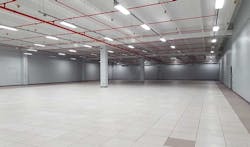In this week’s Voices of the Industry, David Wood, Director of Power Business at Raritan, a brand of Legrand, explores the elements of the data center of the future.
David Wood, Director of Power Business at Raritan
From the vantage point inside today’s datacenter it’s a safe bet that the pace of change in datacenters will accelerate over the next decade and beyond. We all know that change is being spurred by increasing demand for digital services and new business models, as well as the need to embrace new technologies and innovation while mitigating disruption. It’s also a safe bet that emergent datacenter types will share some traits with existing facilities but also will be tailored to new use cases. New edge data center capacity, for example, will be required to aggregate, process, store and analyze data from Internet of Things (IoT) infrastructure and other evolving use cases.
So what will the datacenter of 2025 and beyond look like?
We asked the datacenter experts at 451 Research to examine the forces of change over the next decade so that they could share with us predictions about new datacenter types, and to suggest ways to get ready for the future. The results of our sponsored research were published in the 451 Research Pathfinder Report “Datacenters of the future; a shifting landscape from the core to the edge.” Here are excerpts from the report:
Future datacenters
Accurately predicting the evolution of physical datacenter design and operation over the long term is obviously challenging. The number and types of datacenter form factors have changed significantly since the early days of the mainframe. We expect that pace of change to continue into the foreseeable future, with a move away from generalist, inefficient (usually) enterprise-owned sites.
It is possible to identify a number of future datacenter types (some of which exist today) that are likely to dominate in the next decade and beyond. Future datacenter types could include, but not be limited to, the following:
- Hyperscale (cloud operators but also some service providers)
- Cloud (non-hyperscale) and service provider
- Colocation (MTDC) and service provider
- Enterprise (dedicated, premium sites and fewer closets/rooms)
- Edge (micro-datacenters as well as core sites)
- HPC and specialized
Outlook
Datacenter operators are facing a time of unprecedented change. In 10 years, it is likely that the datacenter landscape will look very different as it responds to macro forces and technology trends:
- Today’s distributed datacenter landscape will likely develop into a more intelligent, highly interconnected network made up of new datacenter form factors. Compact, self-managing datacenter nodes and hubs (of data or connectivity, or both) will be embedded and pervasive, supported by and feeding into large datacenter campuses.
- New edge capacity will be made up of clearly distinct and different datacenter types. They will include hyperscale cloud and large colocation facilities that are sited close to the point of data generation to support many applications; new micro-datacenters at the edge; and smaller clusters of capacity that may not be large or critical enough to be technically described as datacenters.
- Large datacenters could effectively become their own power utilities and act as energy hubs. Being able to control the quantity, quality and security of their power source via, for example, private micro-grids will improve energy resiliency.
- Access to connectivity, reliable power and energy costs will continue to dictate the siting of new facilities. However, the importance of data governance and privacy will increase as datacenter operators respond to stricter regulations and public pressure. Growth in edge demand driven by IoT and other applications/use cases will also drive demand for new and specific datacenter form factors in largely urban locations.
Future-proofing today’s infrastructure
It is sometimes said that the most efficient datacenter is the one that doesn’t have to be built. Despite the benefits that new form factors will bring, operators are incentivized to ensure that existing sites are available, productive, highly utilized and efficient for as long as possible (See Figure 4). Datacenters built today with 10- to 15-year lifespans will also be the datacenters of the 2020s and into the 2030s. Operating hybrid IT environments provides increased flexibility in terms of capacity management, but consolidation and/or upgrades to on-premises IT infrastructure and implementation of virtualization can improve utilization and productivity of existing sites.
IT hardware in a datacenter is typically refreshed in a three- to four-year time-frame, but most facilities infrastructure is considerably harder, and more costly, to update or retrofit. It is standard practice to overprovision cooling and power overhead to allow for future IT capacity requirements (balanced against efficiency). However, this could be described as future-proofing for changes in load rather than for new physical technologies that might render aspects of the design obsolete. There are, however emerging and established strategies and technologies (some of the same that are shaping future datacenter types) that can help maximize efficiency and capacity management and also reduce the risk of obsolescence. These include:
- Modular designs – Adding new space using PFM (including containers or micro-datacenters) provides benefits in terms of short-term capacity requirements but also for long-term innovation. Architects and engineers can take advantage of prefabrication to explore novel (in some cases, radical) ways to improve the structural, mechanical and electrical features of the design. Factory integration and modular installation of next-generation PFM infrastructure will deliver such new designs to existing sites with less cost and complexity.
- Flexible power distribution and storage – The use of specific technologies such as upgradable and intelligent (three-phase) PDUs, medium voltage distribution, and busbar power distribution provides scalability and adaptability to changing load requirements for existing sites. Building in sufficient compute headroom in intelligent devices such as smart PDU controllers also helps to ensure their longevity. Operators will benefit from testing and adopting these technologies in existing sites, since they are likely to become increasingly standard in future datacenter builds. Emerging energy management, (on-site) generation and storage technologies, including micro-grids, could also eventually help future-proof sites for power availability and resilience.
- Efficient and high-density cooling – As with power distribution, flexibility in cooling design is key to effective capacity management and future-proofing. Operators that currently rely on mechanical cooling should investigate chiller-free designs, since free-air cooling is likely to become the default option in most future sites (depending on geography). New capacity should also be built out with the capability to support close-coupled cooling, including rear-door heat exchanges and/or direct liquid cooling (requiring water distribution to the rack or row).
- Management software – Tools such as DCIM can reduce risk while also enabling new efficiencies, better capacity forecasting and improved business agility. In addition, the data-driven insights from using DCIM, and DMaaS, to more closely monitor and manage existing sites can significantly improve facility efficiency and capacity planning.
One thing is certain: the datacenter – in all its new forms, shapes and roles – will continue to enable innovation and drive technological and business transformation.
David Wood is Director of Power Business at Raritan. To learn more about the technology trends impacting datacenter design and operations, download the free Raritan-sponsored Pathfinder Report: “Datacenters of the future; a shifting landscape from the core to the edge,” produced by 451 Research.


